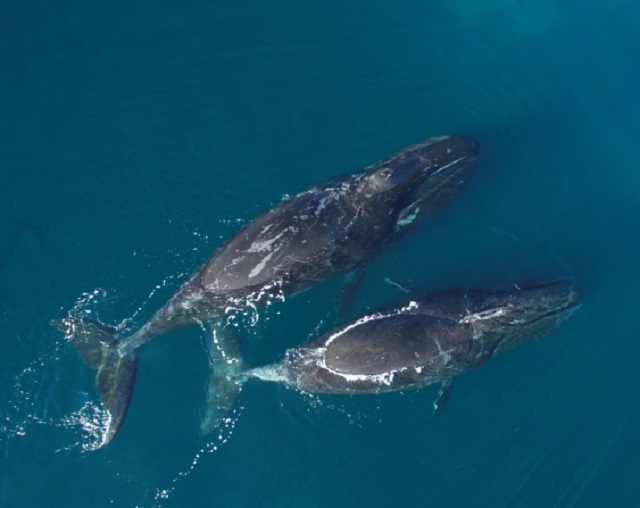
Researchers on Tuesday said they conducted an intensive study of the vocalizations -- singing -- of a population of roughly 300 bowhead whales in the sea east of Greenland from 2010 to 2014, using underwater microphones.
They amassed the largest collection of recordings ever made for bowheads, revealing a diverse and constantly changing vocal repertoire.
The researchers, who identified 184 distinct songs, said the singing apparently is a reproductive display by males. Bowhead whales, hunted almost into oblivion centuries ago, can exceed 60 feet (18 meters) in length.
Evolution 101: Genetic evidence says cows and whales are related, says doctor
They are the only baleen whale living year-round in the Arctic and have the thickest blubber of any whale. Among the world's whales, only bowheads and humpbacks produce really variable songs. Other filter-feeding baleen whales like blue, fin and minke whales produce much simpler songs that are more or less the same every year.
University of Washington oceanographer Kate Stafford said humpback songs are very orderly, akin to classical music, while bowhead songs seem freer, akin to jazz music, not appearing to follow a clear set of rules.
"They are highly varied. Some sound absolutely haunting," said marine biologist Kit Kovacs of the Norwegian Polar Institute and the University Centre in Svalbard. "But others sound as though something wild is taking place in a barn."
Whales use sound it to navigate, communicate and find prey and mates. Sound travels efficiently underwater and much further than light, and odors also do not transmit very well underwater.
Giant blue whale, calf sighted near Karachi waters
"Whales sing to communicate 'intention,' in this case readiness to mate. The song is usually only performed by males to communicate both with other males -- 'I am bigger, stronger more motivated, et cetera' -- and to females -- 'I am big, strong and highly motivated,'" Kovacs added.
The research, published in the journal Biology Letters, confirmed that the bowheads sang regularly from late fall to early spring. "So songs are completely changing both within and between years. And we don't really know why," Stafford said.
"It's likely to remain a mystery because they sing in the Arctic under heavy ice during the polar night, conditions that are not very conducive to humans getting out and seeing and studying them at this time of year."

1725783822-0/Tribune-Pic-(15)1725783822-0-165x106.webp)















COMMENTS
Comments are moderated and generally will be posted if they are on-topic and not abusive.
For more information, please see our Comments FAQ